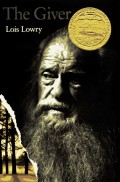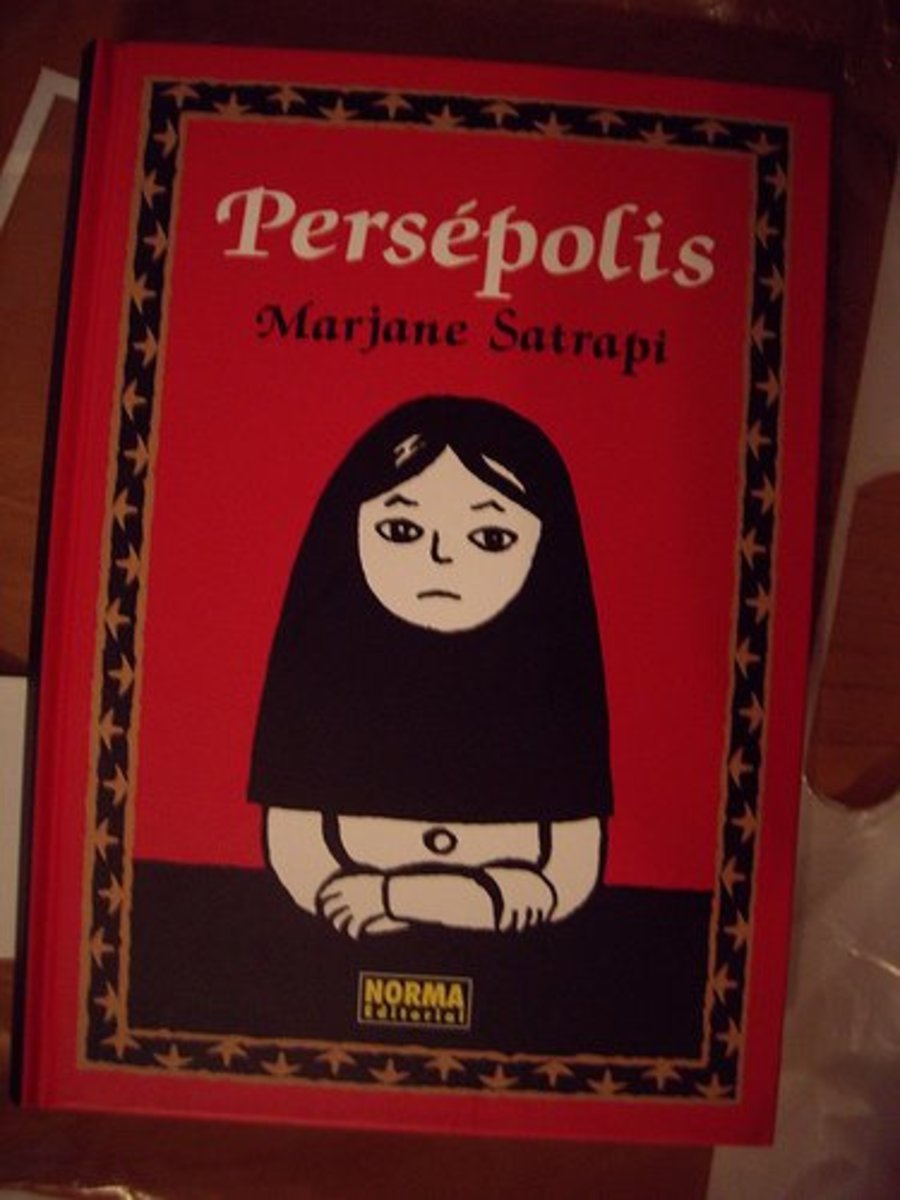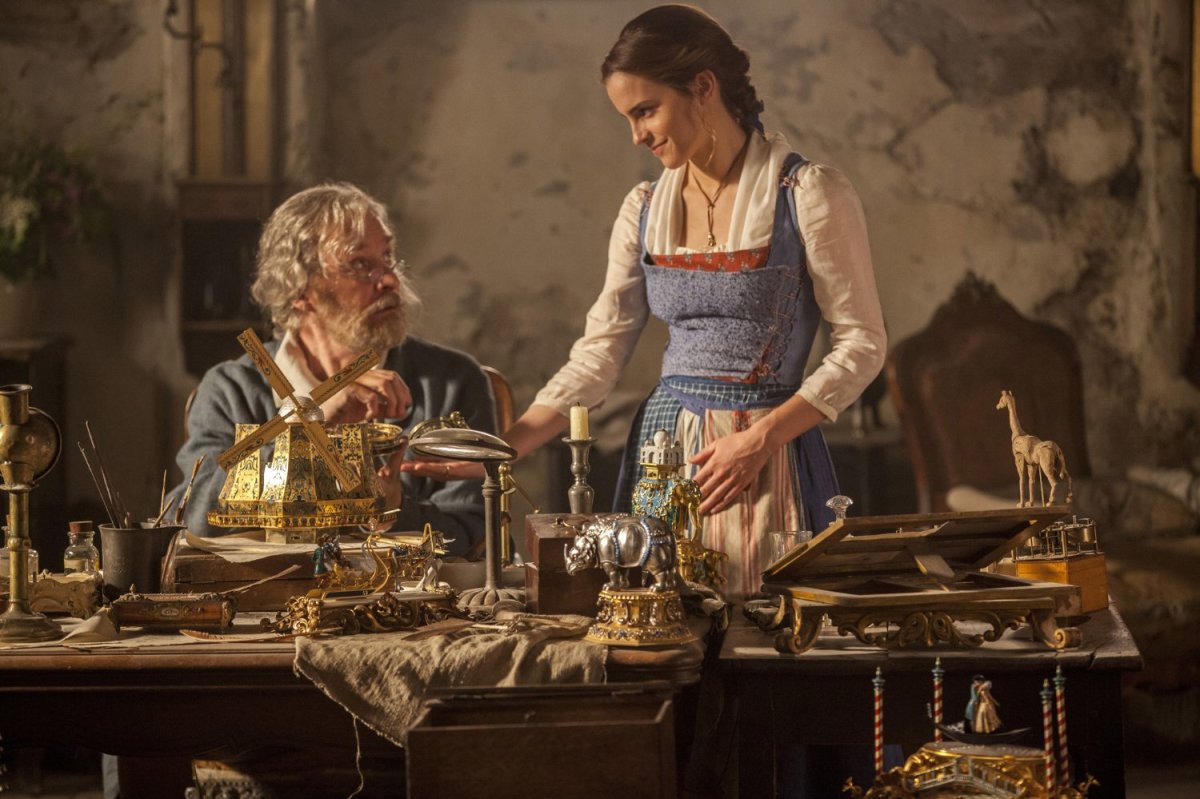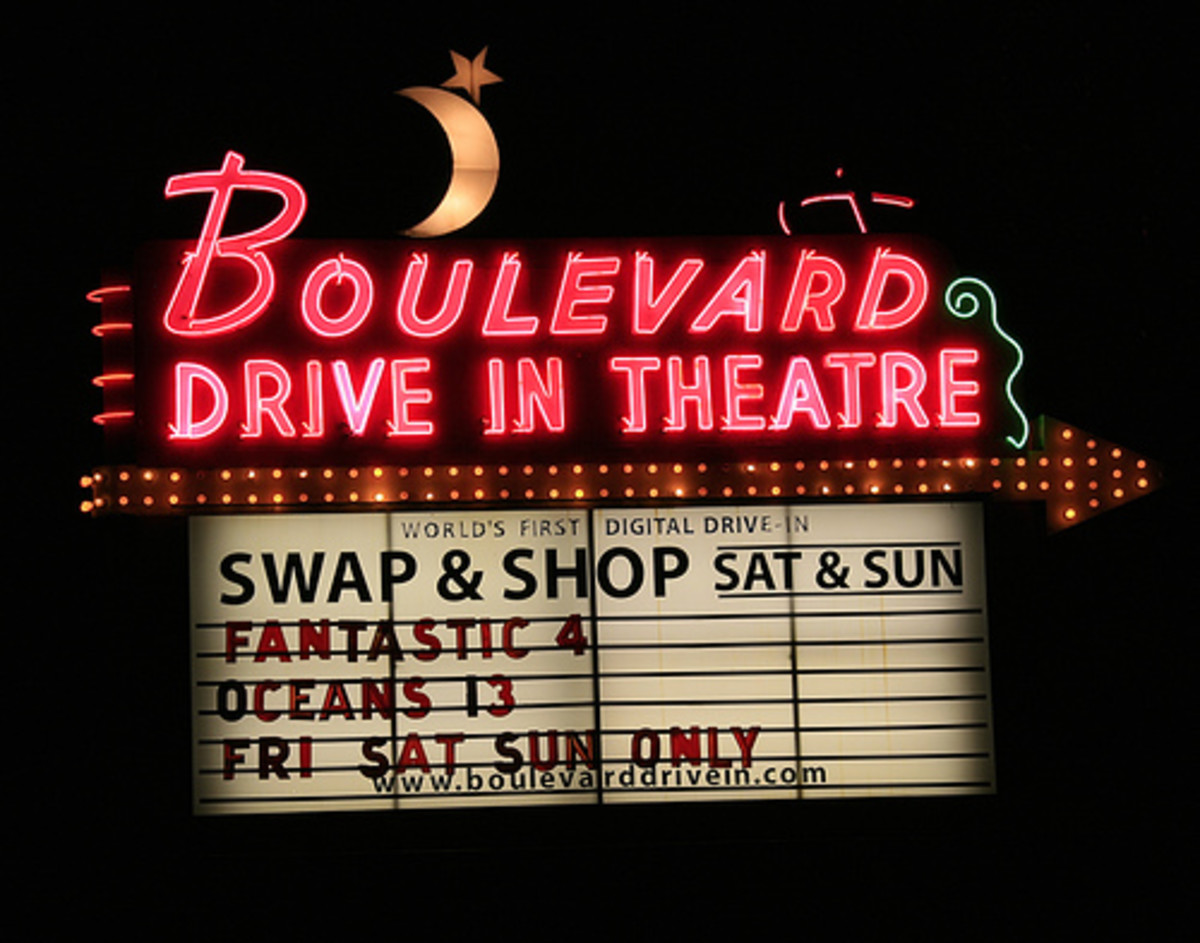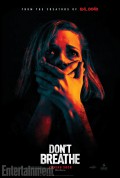Page to Screen: The Giver
Movie Poster for The Giver
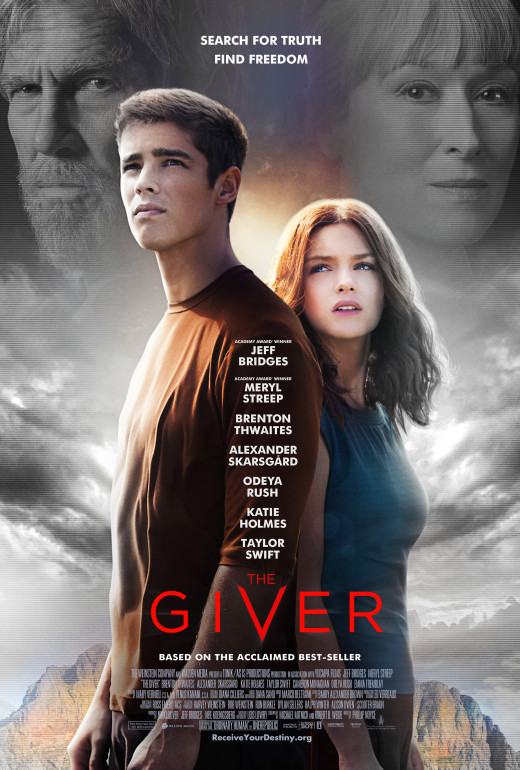
The Film
The movie adaptation was directed by Philip Noyce and released on August 15th, 2014, eleven years after the book was initially released. It follows the same plot line with some changes made to make it more contemporary and modern. It stars Jeff Bridges, Meryl Streep, Brenton Thwaites, Alexander Skarsgård, Odeya Rush,Katie Holmes, Taylor Swift, Cameron Monaghan and Emma Tremblay.
At the time of this posting, it currently sits at $15 million at the box office with $4.7 on its opening day. The film adaptation holds a score of 30% on Rotten Tomatoes and a 46% on Metacritic.
The Book
Lois Lowery's The Giver was published in 1993 as a child's novel, featuring a dystopian world centered on a utopian society that is largely restricted in order to keep negativity out which helps to avoid conflict. In order to preserve this utopian aspect, all leaders save one must know nothing of the outside world, and that one is called the Receiver of Memory. THe Receiver of Memory is an advisor anytime a strange circumstance appears that no one else understands, and eventually that Receiver becomes a Giver, training the next Receiver. However, as the newest Receiver, Jonas, realizes the sacrifices his world has made to be what it is, he quickly develops issues with it.
The book went on to win the Newbery Medal and sold more than 10 million copies, as well as being included in numerous middle schools as required reading. It has also been featured occasionally as a challenged book, or a book grounds for being removed from school. Nevertheless, three more books that connect to this same world with the same characters follow this as well.
Lois Lowry's The Giver
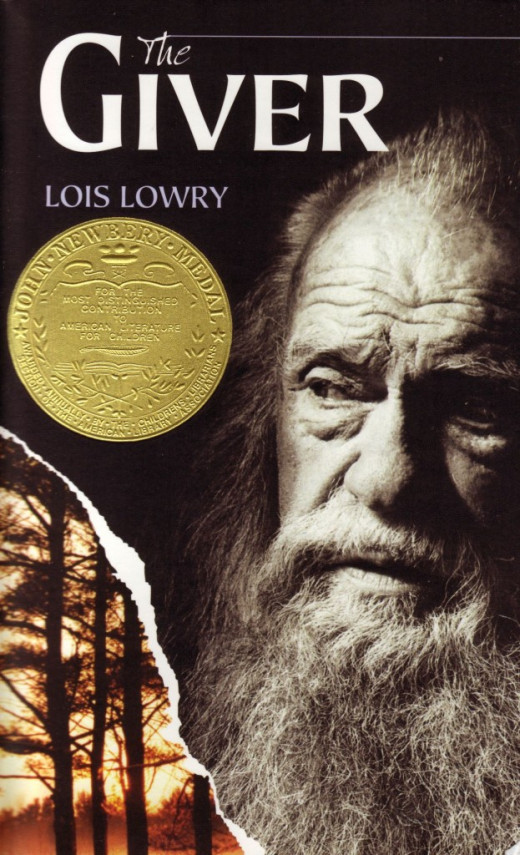
Differences between Novel and Film
Jonas
One of the most immediate and important changes between the book and movie was the age of the main character, Jonas. In the books, Jonas is 12 years old and acts as a 12 year old in his position would. His thought process is still immature and developing, and certain side points to the story (Jonas's Stirrings, or physical attraction) makes sense due to the character roughly hitting the age of puberty. In the book, when Jonas began having his 'Stirrings,' he was instructed to take pills that would decrease that drive. As an 18 year old, this can still be explained through the use of the 'injections' that take the place of the pills, since the pills have been taken for a much longer period of time.
Color
Something the film seems to lose a little is the importance of color. Red is definitely the first color that Jonas comes across, true, but there's much greater gravity to it than there was in the film. Fiona's hair is red as well, but there's something to note. There are geneticists working the DNA pool that the Community has and have been trying to get away from something so drastically different as red hair. In the book, the Giver especially remarks that Fiona's hair must drive them crazy.
Also, it's no longer a positive revelation in the book as it stays in the film. When Jonas willingly accepts the memory of war to help the Giver in the book (in the film it is unintentionally passed via nightmare), he isolates the color red with blood and how terrible that is.
The Transfer of Memory
A rather important change, in the film the Transfer of Memory is given by the embracing of forearms, which is visually helped through the marking on one's arm. In the book, the Giver makes Jonas take off his shirt and lay down as the Giver puts his hands on his back. While this doesn't really hamper the flow of the book, I can see why the film decides to forego this ceremonial ritual for many reasons. For one and probably most importantly, the length of the movie. Instead of quickly reaching out and grabbing forearms, it would require Jonas to take off his shirt, find a bed, and lay face down before the Giver put hands on him. Also, those less familiar with the book might find this kind of interaction somewhat creepy.
Fiona
Fiona herself marks some of the more drastic changes in book to film. For example, it's very clear that she has blue eyes. The only characters referred to as having pale blue eyes in the book are potential Receivers, namely The Giver, Jonas, and the infant Gabriel. The film doesn't seem to acknowledge eye color at all, instead referring to a triangular birth mark located on the forearm of the potential Receiver. Due to casting, this subtle change literally changes nothing in the grand scheme of things.
More importantly is Fiona's role in the film as compared to her role in the book. In the book, she's on the page 2-3 times and referenced perhaps 2-3 times more. Jonas's other friend, Asher, was far more visible and detailed in the book than she was. Fiona wasn't Jonas's love interest in the book. In fact, there was no love interest at all, probably due to the fact that Jonas and his friends were about 12 years old.
The book gives her very little important, using her hair as a plot point and infrequently mentioning her. The film however, because of Jonas's growing infatuation of her, brings her to the center of his revolution against Sameness, forcing her to actively help him with retrieving Gabriel (a feat he does alone in the book) and to serve as a distraction for him to get away. She was never in danger of being 'released' in the book as she was with the film.
Asher
Asher's character is fairly different between the works for a variety of reasons. For one, he was also a pre-teen in the book, which is always a big difference when compared to an 18 year old. Furthermore, Asher was a bit of a cut-up in the books, having poor diction with his words (always being required to correct himself when reminded of Precision of Language), and ultimately being assigned to a recreational director (as is slightly shown in the film where Jonas walks past him playing with children after receiving the memory of war). In the film, it arguably hints at him having negative feelings towards Jonas and Fiona's relationship and he's far more militarized, having no issues with diction nor does he speak out of line or join his friends when they break rules. Also, one of the most physically drastic changes is his job, switching from recreational director to drone pilot, which is referenced again during Jonas's escape.
Jonas's Parents
Jonas parents switch polarity from book to film. In the book, Jonas's dad got more page time, while the opposite is true in the adaption. The more passive character in either work doesn't get much attention or detail to their characters.
What's interesting as well is Jonas's father in the book. He's one of the few characters that straight out lie to Jonas, telling him that infants who are released are delivered to other communities except that Jonas's father literally euthanizes them and drops them down a garbage chute. It paints him in a negative light, while in the film he's oblivious to what he's doing and doesn't lie about his actions to his son.
Conversely, Jonas's mother, while not clearly being painted with evil actions, is commonly shown converting with the Chief Elder, who seems to have more understanding of the situation of the Community and is the main physical face of the conflict in the film. In the film, Jonas doesn't express as much distaste for his mother as he does for his father in the book, however.
Jonas's Sister
In the book, Jonas confers a lot more information to his sister directly. There's even a small hint of it in the film when it's shown his sister listened to him explain that the 'Comfort Object' is actually an elephant instead of a hippo.
Technology
There's a significant change in technology between book and film. For example, the Giver in the book has a secretary that allows people in and does a lot of tasks for him, rather than the automated systems seen on the screen. The planes mentioned are replaced by remote controlled drones that use some kind of gravity-tractor beam. The injections seen in the movie (administered bloodlessly through a pod-like structure) is originally envisioned as rather rudimentary pills). There are numerous more small comparisons as well.
There's also the case of the Edge of the Community, a cliff facing over a great mist that's mostly imperceptible. In the film, Jonas jumps it on his motorcycle. In the book, Jonas simply rides his father's bicycle down a path, which would have made a lot less exciting scene. This probably helps the audience understand a more visible boundary to the Community.
Movie Trailer
Closing Thoughts
In my personal opinion, the film is a great adaptation from book to movie. It follows the main plot of the movie and changes some details to make it more accessible for today's audience with an older POV character, better technologies, and a focus on a romantic relationship that draws in more of an audience. There are small inconsistencies, and some of the 'science' in the book's plot continues to be unexplained in the adaptation. Also, as it's a film, it has less time to delve into detail which works against itself when such a strong society image is presented but goes relatively unexplored. However, the film takes the story, reshapes it a little, and presents it effectively.
Book vs. Movie
For those of you who read the book and watched the movie, what did you prefer?
Further Reading
You can read more Page to Screen adaptations if you click here.


